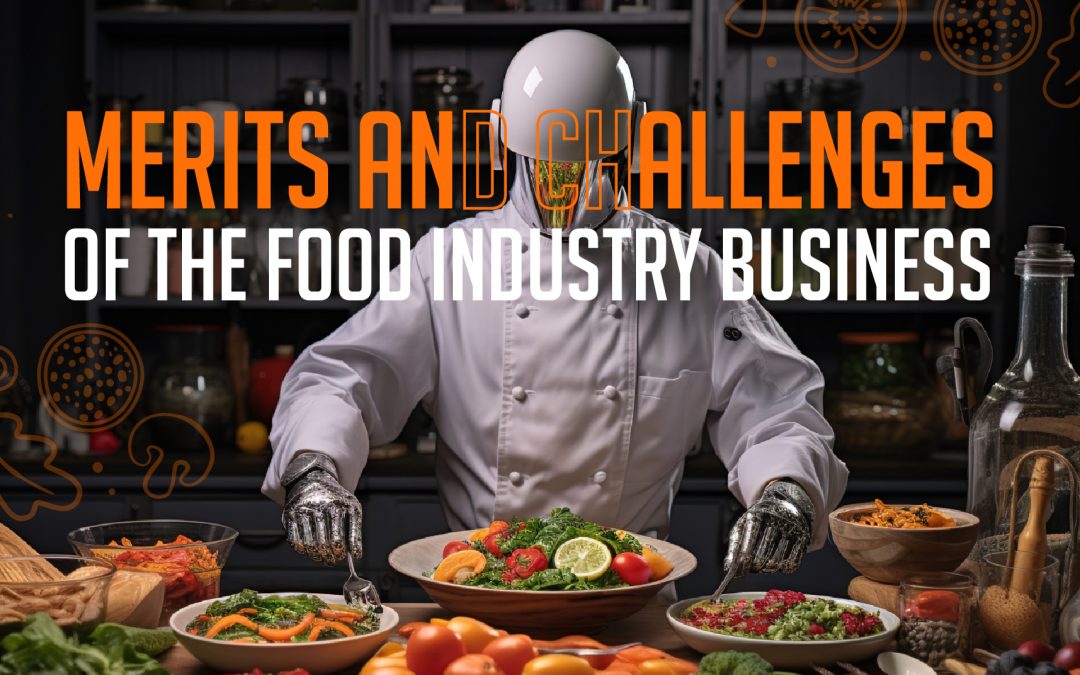The global food industry is a cornerstone of the world economy, vital for feeding populations and fostering economic growth. This industry spans small local eateries to vast multinational corporations, encompassing all activities related to food production, processing, distribution, and sales. This blog explores the merits and challenges of the food industry, highlights the unique food specializations of various countries, and delves into the growth, importance, and success stories within this sector.
Global Food Industry Overview
Countries Specializing in Food
Each country contributes uniquely to the global culinary landscape, often becoming synonymous with particular foods:
- Italy: Renowned for pasta, pizza, gelato, and wine. Italy’s culinary arts are celebrated for their rich flavors and traditional methods.
- France: Famous for cheese (like Brie and Camembert), pastries (such as croissants and macarons), and fine dining establishments.
- Japan: Known for sushi, sashimi, ramen, and sake. Japan’s food culture emphasizes freshness, quality, and presentation.
- India: Diverse cuisines with an extensive use of spices. Iconic dishes include curries, biryanis, and a variety of vegetarian options.
- Mexico: Famous for tacos, mole, tequila, and chocolate. Mexican cuisine is rich in flavor and cultural history.
- USA: Known for its fast food culture, barbecue, and a diverse range of culinary influences from around the world.
Growth of the Food Industry
The food industry is experiencing robust growth:
- Market Value: The global food and beverages market was valued at approximately USD 8.1 trillion in 2020 and is projected to reach USD 9.4 trillion by 2025.
- Employment: The industry employs millions globally. In the U.S. alone, the restaurant industry employs about 15.6 million people.
- Innovation: There is a surge in innovation, particularly in areas like plant-based foods, food delivery services, and sustainable packaging.
The scale of Food Businesses
Food businesses range from small to large-scale operations:
- Small-scale: Examples include family-owned restaurants, food trucks, and local bakeries. These businesses are often deeply rooted in their communities and offer unique, personalized culinary experiences.
- Medium-scale: This includes regional chains and specialty food producers. They often have multiple locations and a more extensive customer base.
- Large-scale: Multinational corporations like Nestlé, PepsiCo, and McDonald’s dominate this category. They operate on a global scale, often setting industry standards.
Starting a Food Business
Basic Investment
The initial investment varies depending on the type and scale of the business:
- Small-scale: Starting a food truck or small café may require an investment of $50,000 to $100,000, covering equipment, initial inventory, and permits.
- Medium-scale: Opening a mid-sized restaurant or specialty food production facility can cost between $250,000 and $1 million, including leasehold improvements, kitchen equipment, and staffing.
- Large-scale: Launching a large restaurant chain or a food manufacturing plant requires multimillion-dollar investments, including extensive infrastructure and marketing budgets.
Knowledge for Entrepreneurs
Aspiring food entrepreneurs need a comprehensive understanding of:
- Industry Knowledge: Familiarity with food safety regulations, supply chain management, and culinary skills is essential.
- Business Acumen: Skills in finance, marketing, and customer service are crucial for managing operations and growth.
- Innovation: The ability to innovate and adapt to changing consumer preferences is key to staying relevant and competitive.
Challenges in the Food Industry
The food industry faces several significant challenges:
- Regulatory Compliance: Navigating complex food safety and labeling regulations can be time-consuming and costly.
- Supply Chain Issues: Ensuring a consistent and quality supply of ingredients is challenging, especially during global disruptions like pandemics.
- Competition: The industry is highly competitive, requiring constant innovation and differentiation.
- Sustainability: Increasing pressure to adopt sustainable practices to minimize environmental impact.
- Consumer Trends: Keeping up with evolving consumer preferences, such as the demand for organic, non-GMO, and plant-based products.
Additional Challenges
- Labor Shortages: Finding and retaining skilled labor can be challenging, especially in regions with high competition for hospitality workers.
- Technological Adaptation: Keeping up with technological advancements in food production, delivery, and marketing requires significant investment.
- Economic Fluctuations: Economic downturns can significantly impact consumer spending on dining out and luxury food items.
Merits and Benefits of the Food Industry
Economic Contribution
The food industry significantly boosts the global economy:
- GDP Contribution: The food and beverage sector is a critical part of many countries’ GDP. For example, the food industry accounts for about 10% of the European Union’s GDP.
- Employment: It creates millions of jobs worldwide, from farm laborers and factory workers to restaurant staff and corporate executives.
Food Security and Health
The industry plays a vital role in ensuring food security and promoting health:
- Food Security: It helps maintain a stable supply of food, which is essential for preventing hunger and malnutrition.
- Health and Nutrition: The industry is increasingly focusing on producing healthier food options to cater to the growing demand for nutritious and balanced diets.
Innovation and Technology
Innovation drives the food industry forward:
- Technological Advancements: The industry continuously evolves with advancements in food processing, packaging, and distribution technologies.
- Sustainable Practices: There is a growing emphasis on sustainability, leading to innovations in reducing food waste, energy-efficient production methods, and environmentally friendly packaging.
Cultural Exchange and Diversity
The food industry encourages the blending of traditions and the appreciation of varied cultures:
- Cultural Heritage: Food is a significant part of cultural identity, and the global food industry allows people to experience diverse cuisines.
- Fusion and Innovation: The blending of different culinary traditions leads to innovative and exciting new food products and dining experiences.
Consumer Trends and Market Adaptability
The industry is adept at adapting to changing consumer trends:
- Customization and Personalization: Businesses are increasingly offering customized food options to meet individual dietary preferences and restrictions.
- Convenience: There is a growing market for convenient food options, such as meal kits and ready-to-eat meals, catering to busy lifestyles.
Success Stories Food Industry
McDonald’s
McDonald’s began in 1940 and faced early challenges such as establishing a consistent supply chain and maintaining quality across locations. Innovations like the Speedee Service System and strategic franchising allowed it to expand rapidly. Today, McDonald’s operates over 38,000 locations worldwide, serving over 69 million customers daily.
Nestlé
Nestlé, the world’s largest food and beverage company, started in 1867 as a producer of infant food. Facing challenges like fluctuating commodity prices and regulatory changes, Nestlé diversified its product range and pursued strategic acquisitions. Today, Nestlé offers over 2,000 brands and operates in 187 countries.
Ben & Jerry’s
Ben & Jerry’s began in 1978 as a small ice cream shop in Vermont, USA. Founders Ben Cohen and Jerry Greenfield faced challenges such as strong competition and financial difficulties. Their commitment to high-quality ingredients and innovative flavors, combined with a strong focus on social responsibility, helped them stand out. Today, Ben & Jerry’s is a globally recognized brand known for its unique flavors and commitment to social causes.
Innocent Drinks
Innocent Drinks, founded in 1999 by three university friends, faced the challenge of entering a crowded beverage market. Their focus on healthy, natural ingredients and sustainable practices helped them grow rapidly. In 2013, Coca-Cola acquired a majority stake in Innocent, allowing the brand to expand its reach while maintaining its core values.
Warby Parker
Though not a food company, Warby Parker’s success story provides valuable insights for food entrepreneurs. Founded in 2010, Warby Parker disrupted the eyewear industry by offering stylish, affordable glasses online. Their direct-to-consumer model and commitment to social responsibility (for every pair sold, a pair is distributed to someone in need) helped them build a strong brand. Food entrepreneurs can draw parallels in terms of innovation, customer engagement, and social impact.
Goya Foods (USA)
Goya Foods, founded in 1936 by Spanish immigrants in New York, is now the largest Hispanic-owned food company in the United States. Despite initial challenges, including financial constraints and market competition, Goya focused on offering high-quality, authentic Latin American products. Through strategic marketing and community engagement, Goya Foods has become a household name, providing a wide range of products that celebrate Hispanic culture.
Tetra Pak (Sweden)
Tetra Pak, founded in 1951 in Sweden, revolutionized the packaging industry with its innovative aseptic packaging technology. This allowed liquid food products to be stored without refrigeration, significantly reducing food waste and improving food safety. Tetra Pak’s success lies in its continuous innovation and sustainability initiatives, making it a global leader in food packaging.
Blue Apron (USA)
Blue Apron, founded in 2012, introduced the meal kit delivery service concept. Despite facing logistical challenges and intense competition, Blue Apron focused on providing fresh, high-quality ingredients with easy-to-follow recipes. Their success story highlights the importance of convenience and quality in catering to modern consumers’ needs. Blue Apron went public in 2017, further solidifying its place in the food industry.
Quorn (UK)
Quorn, launched in 1985 in the UK, specializes in meat substitute products made from mycoprotein. The company faced initial skepticism and regulatory challenges but gained popularity with the growing demand for vegetarian and vegan products. Quorn’s commitment to sustainability and health has made it a leading brand in the plant-based food sector, now available in multiple countries worldwide.
Jollibee (Philippines)
Jollibee, founded in 1978, is the largest fast-food chain in the Philippines and a major global player. Starting as an ice cream parlor, it expanded into a fast-food restaurant offering unique Filipino dishes alongside popular Western foods. Jollibee faced challenges such as intense competition from established international chains. However, its focus on quality, innovation, and customer service helped it become a beloved brand. Jollibee now has a significant presence in the United States, the Middle East, and other regions.
Yakult (Japan)
Yakult, founded in 1935, introduced probiotic drinks to the world. The company faced the challenge of educating consumers about the benefits of probiotics. Through extensive research, marketing, and partnerships with health professionals, Yakult established itself as a leader in the health beverage market. Today, Yakult is consumed in over 40 countries, showcasing the power of scientific innovation in the food industry.
Barilla (Italy)
Barilla, founded in 1877, is a leading pasta manufacturer globally. Starting as a small bread and pasta shop in Parma, Italy, Barilla faced numerous challenges, including World War II and changing market dynamics. Through innovation, modernization, and strategic acquisitions, Barilla expanded its product range and global presence. Barilla’s success story emphasizes the importance of adapting to market changes while maintaining quality and tradition.
Nando’s (South Africa)
Nando’s, established in 1987 in South Africa, is known for its peri-peri chicken. The founders, Robert Brozin and Fernando Duarte, faced the challenge of introducing South African flavors to a global audience. Nando’s focused on creating a unique dining experience with its spicy chicken and vibrant restaurant ambiance. Through effective branding and a strong emphasis on customer experience, Nando’s has expanded to over 1,200 outlets in 35 countries.
Conclusion
The food industry is a vital, dynamic sector with immense opportunities and challenges. Understanding the nuances of this industry—from investment requirements and regulatory compliance to innovation and competition—is crucial for success. Despite the hurdles, many businesses have thrived through innovation, strategic planning, and a deep understanding of market dynamics. The food industry not only nourishes the global population but also drives economic growth, cultural exchange, and technological advancements. For aspiring entrepreneurs, it offers a rewarding path filled with potential for growth and impact.













